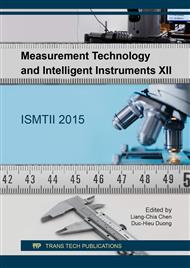p.257
p.263
p.271
p.277
p.283
p.289
p.295
p.303
p.309
Implementation of an Embedded Facial Recognition System
Abstract:
In this paper, an embedded facial recognition system whose platform consists of pcDuono-V2 board with ARM-processor inside and a Linux-kernel-based operating system, Ubuntu, is implemented. A camera is set up on the platform to take human face images. A facial recognition program consisting of AdaBoost algorithm, Haar-like features, integral image method, and cascade classifiers is utilized to recognize images. The AdaBoost algorithm is a modified Boosting algorithm, which is a machine learning algorithm for training cascade stronger classifiers based on Haar-like features, where Haar-like features are the foundation of the recognition. An integral image method is used to speed up the calculation of corresponding rectangle feature values for Haar-like features. The whole facial recognition comprises facial training procedures and recognition procedures. In facial training procedures, sufficient amounts of positive and negative picture samples are necessary for getting Haar-like features to the recognition system. AdaBoost algorithm is then used to the system for training cascade stronger classifiers which are the detection tools in recognition procedures. While in facial recognition procedures, after getting the Haar-like features for the target images or pictures, cascade stronger classifiers work to detect and recognize. According to the experimental results, the resultant embedded system can recognize the experimental subjects in one second for every our considered situations, which assures the real-time performance.
Info:
Periodical:
Pages:
283-288
Citation:
Online since:
September 2017
Authors:
Price:
Сopyright:
© 2017 Trans Tech Publications Ltd. All Rights Reserved
Share:
Citation:


